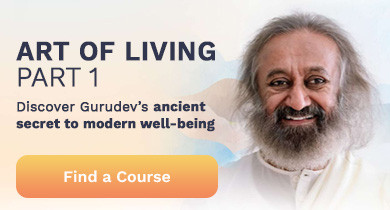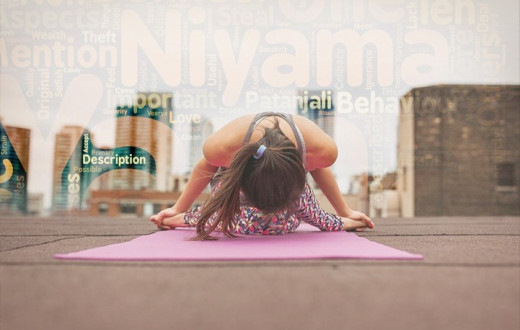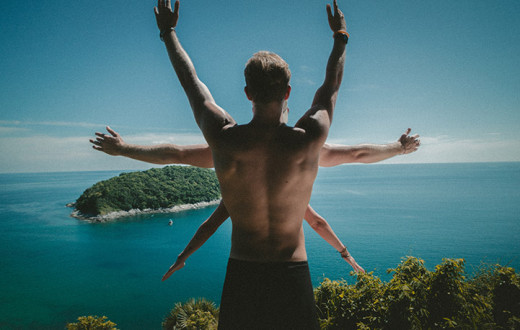By Manmohan Singh | Posted: July 26, 2019
Remember the last time you woke up with fear after an unpleasant dream? It must have terrified you. Now recall the way you got out of the situation. Didn’t you just take a couple of deep breaths to bring you to normalcy? If you can’t remember any such events, give deep breathing a try anytime you feel bothered. This technique will help you enjoy life. You’ll certainly feel relieved when the beauty of breathing heals your soul.
In the philosophical world, breathing’s role in managing the mind, body, and soul has been a matter of intense discussion for a long time. Since breathing is profoundly associated with yoga, yogis have always given it a prestigious place in the ancient science. In yoga, breathing has the label of vital force. Pranayama, the practice of breathing, is defined as the greatest source of pranic energy in the body. How relaxed you are can easily be defined by the speed and style of your breath. The pattern of breathing isn’t only important in life, but is also a significant aspect of yoga practice.
First and foremost, it’s important to understand why breathing is an integral part of the yogic science. The body’s demand for oxygen is not the same at every moment. It keeps on changing with respect to our physical and mental state. When engaged in tasks, we require oxygen, or the pranic energy, at a higher level. Since yoga is all about life, breathing has to be the most notable facet of spiritual practice.
The philosophy of mindfulness
Mindfulness is the core ideology of yoga. The ancient science is about clearance of thoughts and better reasoning. The practices of yoga lead you to one final point: a balanced state of mind. How is this attained? The only genuine answer should be breathing. The process of breathing holds such great importance in mindful yoga that it cannot be defined in words. Imagine yourself descending into the sacred river of pranayama in the morning. Why just imagine? Go and feel it. You’ll land in a zone of ultimate consciousness.
Let’s understand the mechanism. When we breathe, oxygen enters the body and nourishes each and every cell. This is the source of energy, the real energy that helps the vehicle of life run smoothly. Now coming to the yogic aspect of this theory, the constant flow of oxygen promotes the circulation of blood throughout various parts of the human body. When the blood flows in its full capacity and reaches every body part, the practitioner experiences immense happiness. A special form of energy flows across the arteries. This inner vitality brings mindfulness to the human soul and mind. You start looking at things through a spiritual perspective. Soulful awakening is a major factor when enjoying the breathing beauty of yoga.
Blood circulation and the breathing pattern
In yoga asanas or any other physical exercise, blood circulation’s role is quite exceptional. Whether you’re running or performing trikonasana (triangle pose), breathing and blood flow both become active. Since the body requires energy to perform heavy tasks, the process of respiration gets a boost. The pattern of your breathing decides the velocity of blood circulation. This is why when you breathe heavily, the circulation of blood happens rapidly.
There are of course two different kinds of yoga practice: peaceful and zestful ones. In both types of yoga, the importance of breathing is impressive. Suppose you’re engaged in meditation. The mind should be utterly silent in the process. If you try to practice meditation just after performing a heavy physical task, it wouldn’t be successful. Why? Because you’d be breathing heavily, stopping you from letting go and going deep. In order to meditate in the best way, you need a serene environment, peaceful mind, and slower, lighter breathing.
Talking about the practice of advanced poses like ustrasana (camel pose), chakrasana (wheel pose), viparita karani (legs up the wall pose), etc., one should be well prepared to succeed in the performance of these asanas. This is why students are taught to warm their bodies up before intensive yoga practice. Breathing’s role becomes very important in this context. Heavy breathing and the body’s higher temperature are associated closely. When the air enters the body, a special kind of friction takes place between the blood and the wind. This collision warms the blood, leading to its purification. This is probably the best way in which breathing affects the body while practicing yoga. The faster your breathing, the more impactful your blood dialysis process.
The mantle of breathing and respiration in yoga has always been discussed with great captivation. Breathing is like a piece of music to which the body dances. From physical health to spiritual intelligence, the process of inhaling and exhaling has a great influence on almost all body functions. It can beautify your yoga when done well, and can lead to mediocre results in addition to multiple injuries in the body if done poorly. If you want to witness the true mechanism, there’s only one way: join a 200 hour Yoga Teacher Training program.
Manmohan Singh is a passionate Yogi, Yoga Teacher, Ayurvedic therapist and a traveller in India. He loves writing and reading books related to yoga, health, nature and the Himalayas.





























